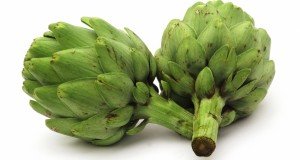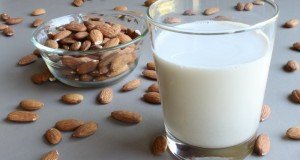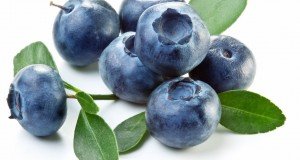5 powerful reasons to start eating garlic TODAY
(NaturalHealth365) You can’t follow a Mediterranean diet or enjoy a savory Provençal meal without garlic. And, as it turns out, if you’re trying to avoid chronic health issues like heart disease or diabetes, you should be eating this powerful herb on a regular basis.
Garlic, a member of the onion family, has a centuries-long history of medicinal use on a global scale. Greek physician Hippocrates was even reported to “prescribe” garlic as a treatment for everything from breathing problems to parasites.
But you don’t have to rely on the word of 5,000+ years of history. Modern day science has plenty to say about the astounding health benefits of this famed antioxidant, anti-inflammatory, anti-microbial, and even antitumor herb.
5 science-backed ways garlic protects your health
1. Protects cardiovascular health. A 2007 study published in the Proceedings From the National Academy of Sciences found that consuming garlic boosts the production of a bioactive compound called hydrogen sulfide.
Hydrogen sulfide functions as a powerful antioxidant and assists with cellular signaling to increase circulation and relax blood vessels. This could explain why garlic has long been known as a natural treatment and prevention for heart disease, which includes atherosclerosis, coronary artery disease, heart attack, and stroke.
2. Naturally treats metabolic syndrome. A 2017 study published in the Journal of Dietary Supplements found that consuming crushed raw garlic significantly improved fasting blood sugar, waist circumference, cholesterol levels (both by lowering “bad” triglyceride levels and raising “good” HDL levels), and blood pressure in people with metabolic syndrome.
SHOCKING PROBIOTICS UPDATE: Discover the True Value of Probiotics and How to Dramatically Improve Your Physical, Mental and Emotional Wellbeing with ONE Easy Lifestyle Habit.
Metabolic syndrome (aka syndrome X) is a deadly collection of co-morbidities including high cholesterol, high blood sugar, high blood pressure, and excessive abdominal fat.
3. Cuts the risk of stomach cancer (and others). In a 2011 meta-analysis published in the journal Gastroenterology, reviewers found that consuming a high amount of vegetables from the Allium family – which includes garlic, onions, chives, and leeks – significantly reduces a person’s risk for stomach cancer.
Many other studies have also found that garlic consumption can reduce the risk of cancer in the brain, lung, esophagus, and prostate.
4. Reduces the risk of osteoarthritis. A 2010 cross-sectional study published in BMC Musculoskeletal Disorders found that women who regularly consumed garlic and other Allium veggies had a significantly reduced risk of hip osteoarthritis.
The authors hypothesized that this was due to a compound in garlic called diallyl disulphide, which is believed to repress enzymes that break down skeletal bone matrixes.
5. Improves diabetes. Reviewers of a 2017 meta-analysis published in the journal Food & Nutrition Research evaluated 9 randomized controlled trials looking at garlic consumption in people with type 2 diabetes.
They found statistically significant improvements in blood sugar and other key diabetic biomarkers when the subjects took garlic supplements (featuring a compound known as allicin), with daily doses ranging from 0.05 g to 1.5 g.
The research doesn’t end there, either. Other reported benefits include a reduced risk of preterm delivery, alcohol-induced liver damage, and even the common cold. And while some of these studies aren’t quite as robust as others, it’s promising to see how a completely natural plant has the potential to deliver such powerful health benefits.
How to enjoy garlic and optimize its health benefits
You may be wondering now: How much garlic do I need to eat to actually get all the benefits out of it?
The exact amount isn’t known for sure yet. The 2007 study from the Proceedings From the National Academy of Sciences featured a concentration of garlic extract equivalent to about two medium-sized cloves of garlic per day.
That may sound like a lot, but keep in mind that garlic can seamlessly fit into almost any meal (think homemade salad dressings, hummus, meat, fish, poultry, stir-fry, omelets, and more). And, believe it or not, per capita consumption of garlic in countries like Korea, China, and Italy is as high as 8 to 12 cloves per day!
To start getting the most out of this powerful and pungent bulb, try the following tips:
- Eat it raw if you can. Yes, it has a super strong taste and odor, but research – such as a August 2013 study published in the journal Food and Chemical Toxicology – indicates that garlic loses its powerful anti-inflammatory properties once its been heated.
- If you are going to cook garlic, chop, slice, or smash the cloves at least 10 minutes prior to putting it on the heat. Preparing garlic in this way initiates an enzymatic process that maximizes its health-boosting benefits.
- The pantry or a cupboard in your kitchen (room temperature places which remain cool and dark) is the perfect place to store garlic.
- Chew on raw mint or try eating lettuce, fennel seeds, or apples after a garlicky meal to avoid the dreaded “garlic breath.”
- Don’t love the taste of fresh garlic or can’t stomach it due to indigestion? Consider trying a high quality aged garlic extract.
One important word to the wise: before adding more garlic to your diet, be sure to chat with your doctor first. Garlic and garlic extracts may interact with certain heart medications, including blood thinners.
Sources for this article include:
ConsumerReports.org
MedicalNewsToday.com
ScienceDirect.com
Healthline.com
Well.blogs.NYTimes.com
PNAS.org
Researchgate.net
Gastrojournal.org
NIH.gov
NIH.gov
Biomedcentral.com











